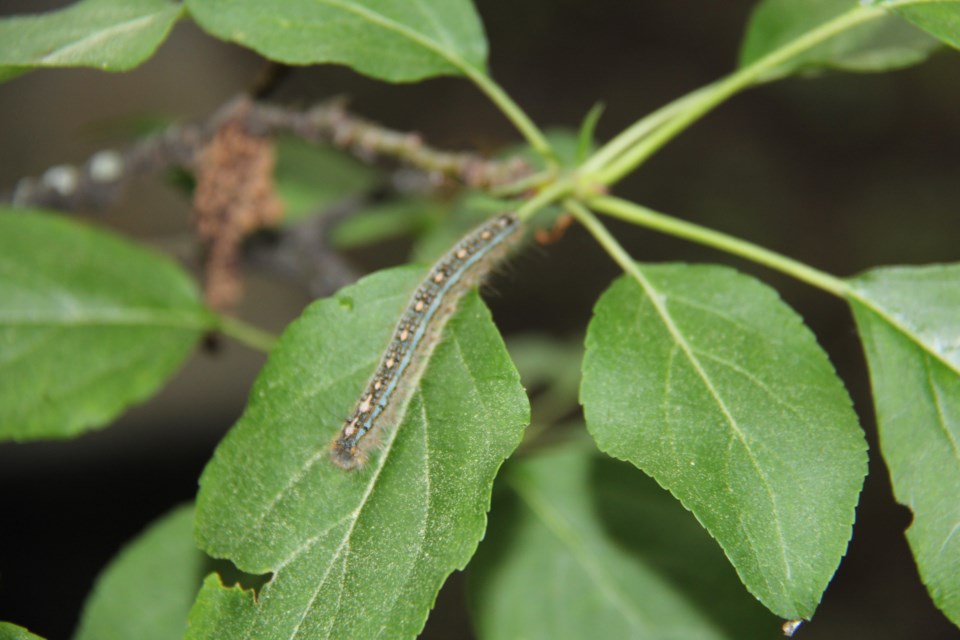You may have noticed the sudden appearance of an inch and half long caterpillar, blue-sided, with tiny yellowish dots on its back.
You may have noticed their web-like nests in your favourite tree.
"They're nothing to worry about," said Mark Joron, a forestry technologist with Millison Forestry, a Timmins company which specializes in forest management.
"The tent caterpillar population grows in cycles, every 7 to 10 years it explodes," Joron explained. "The infestation lasts three years but is not that widespread."
Most forest management experts believe the best way to handle the infestation caused by the population boom, is to let nature balance itself out.
Many like Joron view the sudden population explosion as part of the natural cycle that will eventually even itself out.
"They're a great source of food for the area birds," Joron said.
The tent caterpillars get their name because some species, like the eastern tent caterpillar, lay their eggs in gossamer tent-like meshing, that grows between tree branches.
"They may have some impact on the older larger tree," said Joron. "Generally they do not have a large impact on forestry in Northern Ontario."
The tent of this species is among the largest built by any tent caterpillar according to Wikipedia. It is constructed in the crotch of the host tree and is typically oriented with the broadest wall facing the southeast to take advantage of the morning sun
And, oh those shad flies...but that's another story!
